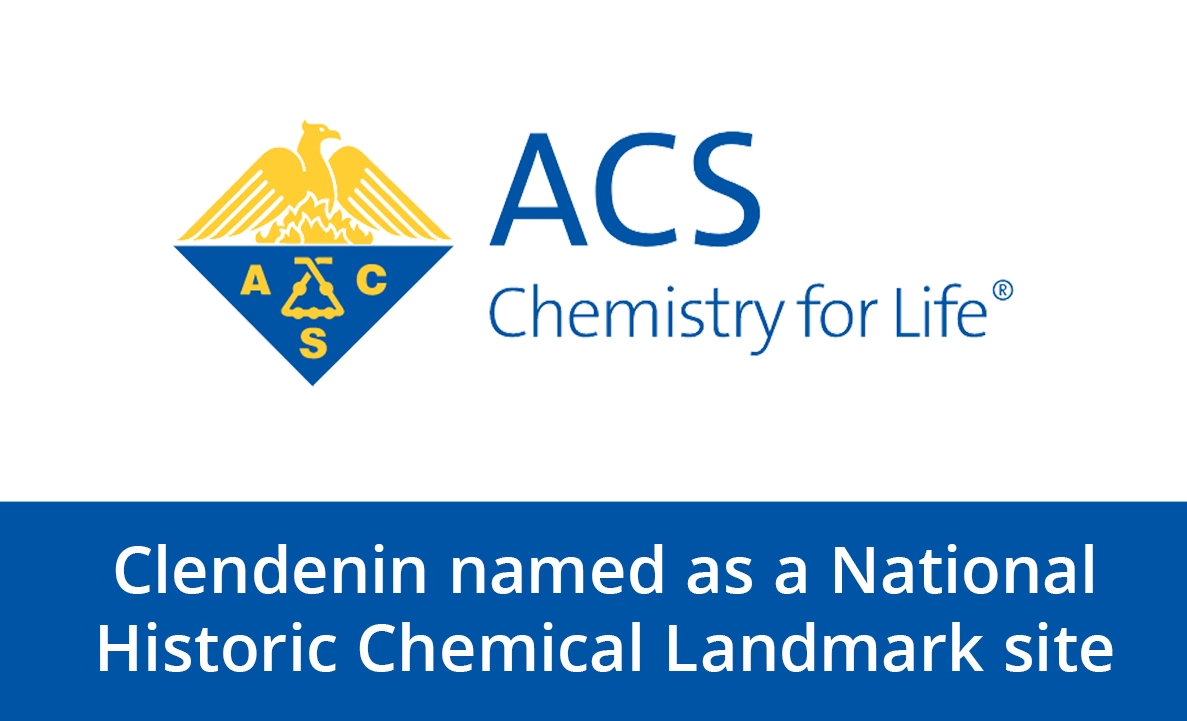Contact: Jack Bailey (304) 766-4109 Jbaile19@wvstateu.edu
CLENDENIN, W.Va. — The American Chemical Society (ACS) has recognized the town of Clendenin as the site for a National Historic Chemical Landmark, the first designation of its type in West Virginia.
West Virginia State University (WVSU) partnered in the effort with the Kanawha Valley Section of the American Chemical Society, the town of Clendenin and Union Carbide in achieving the designation.
In October 1920, Carbide and Carbon Chemicals Corp. was formed as a subsidiary of Union Carbide and Carbon Co. Carbide and Carbon Chemicals Corp. purchased a small gasoline extraction plant in Clendenin and began their work with small hydrocarbons which marked the dawn of the petrochemical industry. Completion of the hydrocarbon separation plant and ethane cracking plant in the summer of 1921, saw the creation of the first petrochemical plant capable of separating light hydrocarbons from natural gas and manufacturing limited quantities of ethylene and its derivatives, which are used to make numerous consumer products.
“The plant in Clendenin represented the birthplace of the worldwide petrochemical industry,” said WVSU Associate Chemistry Professor Dr. Micheal Fultz. “At that site, many important innovations were made in the development of the first ethane-to-ethylene cracker and the development of ethylene derivatives that are still critical to the industry today. These technologies and innovations became the predecessors for future plants around the world.”
By 1923, the company was ready to up-scale the facilities and started surveying sites for a new location. On November 30, 1923, a chemical plant in South Charleston, West Virginia, was purchased from the Rollins Chemical Co. to serve as the new location for the first United States plant specifically designed to produce ethylene. Ethylene is one of the largest produced petrochemicals worldwide, and provides materials used to produce a vast number of products, including but not limited to: garbage bags, food containers, industrial coolants, antifreeze, anesthetics, polyester fibers and polyvinyl chloride.
“At MATRIC, we’re proud of our humble beginnings and our shared heritage with Union Carbide in South Charleston, West Virginia,” said Steve Hedrick, chairman and CEO, Mid-Atlantic Technology, Research & Innovation Center (MATRIC). “Not only did Carbide bring a diverse group of Ph.D.-level researchers and other highly trained engineers and chemists to the community, but also they led the development, testing and commercialization of many of the products and processes that dramatically changed or influenced the petrochemical industry worldwide.”
Hedrick continued, “Today, MATRIC continues to safely employ some of the very best critical thinkers on the face of the earth right here in South Charleston, and we’re at the center of exciting opportunities within the market.”
Tim O’ Neal, vice president and site director of Union Carbide Corp., a subsidiary of the Dow Chemical Co. in South Charleston, said, “As a subsidiary of Dow, the recognition of Clendenin with a National Historic Chemical Landmark is a credit to the retirees and employees for carrying on the Company’s legacy to deliver value growth and best-in-class performance in the regions in which we serve.”
Clendenin Mayor Kay Summers said, “We are honored that the American Chemical Society has chosen to honor Clendenin with a National Historic Chemical Landmark. We are proud of our history as the birthplace of today’s modern petrochemical industry, and the work that began here that led to revolutionary technological advances for our nation and world.
“We look forward to working with all of the partners in this effort to placing and dedicating the plaque that will forever mark this achievement.”
A formal ceremony with the unveiling of the plaque is being planned for fall 2020.
The mission of the American Chemical Society’s National Historic Chemical Landmarks Program is to enhance public appreciation for the contributions of the chemical sciences to modern life in the United States and to encourage a sense of pride in their practitioners for chemistry’s rich history. The program does this by recognizing seminal achievements in the chemical sciences, recording their histories, and providing information and resources about Landmark achievements. For more information visit .
Follow on Facebook, Instagram and Twitter .

American Chemical Society Recognizes Clendenin with National Historic Chemical Landmark Designation
February 25, 2020